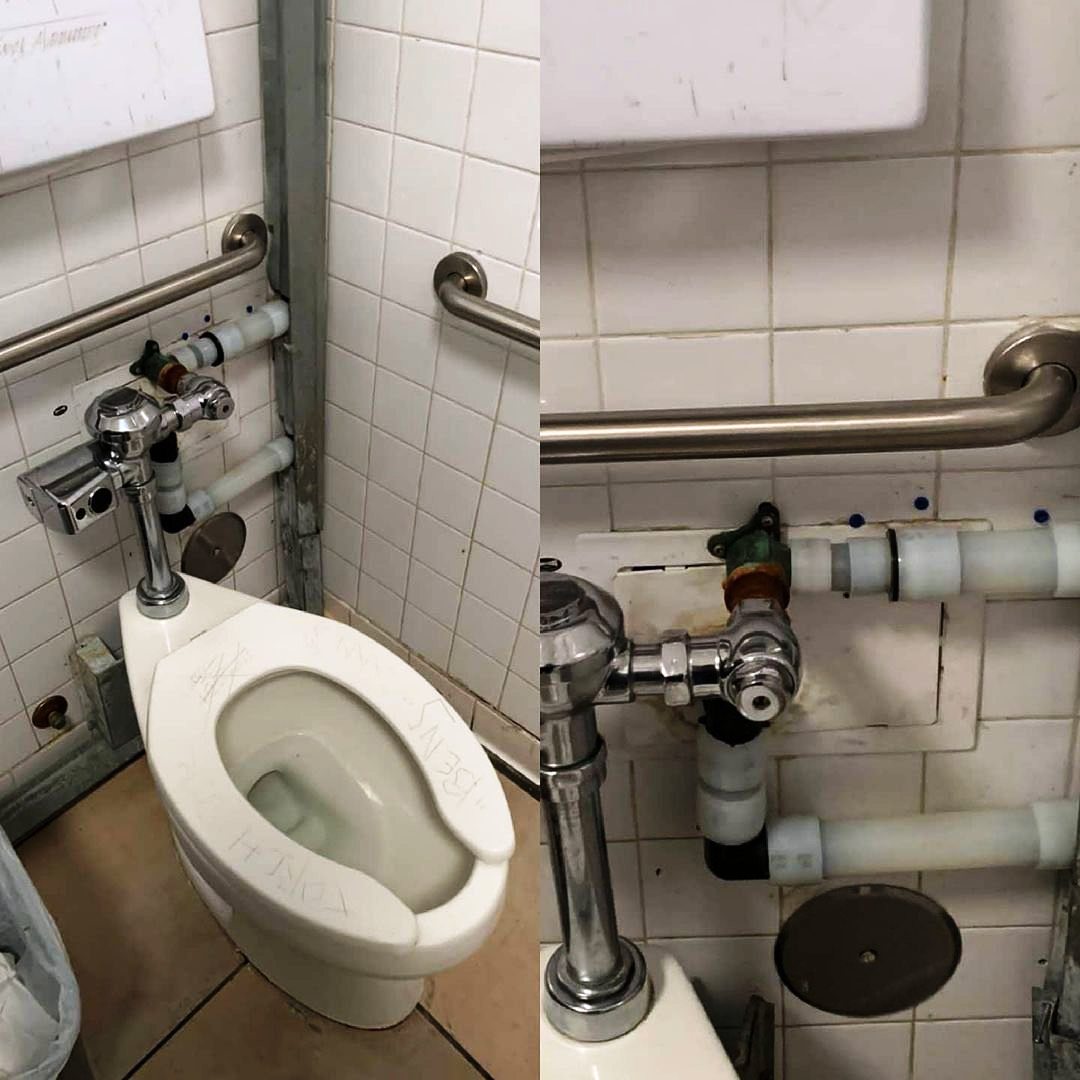Are you currently trying to locate advice concerning Why is My Home Making Strange Plumbing Noises?

To detect noisy plumbing, it is important to establish very first whether the undesirable audios happen on the system's inlet side-in other words, when water is transformed on-or on the drain side. Sounds on the inlet side have varied reasons: too much water stress, used valve and also faucet components, poorly linked pumps or other devices, improperly placed pipeline bolts, and also plumbing runs having way too many limited bends or various other restrictions. Sounds on the drainpipe side typically come from poor location or, similar to some inlet side sound, a format having tight bends.
Hissing
Hissing sound that happens when a tap is opened a little typically signals extreme water pressure. Consult your regional public utility if you presume this issue; it will be able to inform you the water pressure in your location and also can set up a pressurereducing valve on the inbound water supply pipeline if necessary.
Various Other Inlet Side Noises
Creaking, squealing, scratching, breaking, and also touching normally are triggered by the growth or tightening of pipes, generally copper ones providing warm water. The noises occur as the pipelines slide versus loose fasteners or strike neighboring residence framework. You can usually identify the location of the problem if the pipes are exposed; simply adhere to the noise when the pipelines are making noise. Most likely you will discover a loosened pipe hanger or a location where pipelines exist so near to floor joists or other mounting pieces that they clatter against them. Attaching foam pipeline insulation around the pipelines at the point of call ought to treat the problem. Make sure bands as well as wall mounts are protected and also supply appropriate assistance. Where feasible, pipe bolts should be attached to large architectural elements such as foundation walls as opposed to to mounting; doing so decreases the transmission of vibrations from plumbing to surface areas that can magnify and move them. If attaching bolts to framing is unavoidable, wrap pipes with insulation or other resistant material where they get in touch with fasteners, as well as sandwich completions of brand-new bolts in between rubber washing machines when mounting them.
Fixing plumbing runs that experience flow-restricting limited or numerous bends is a last hope that should be undertaken only after speaking with a skilled plumbing service provider. Sadly, this scenario is rather common in older residences that may not have actually been constructed with indoor plumbing or that have seen numerous remodels, especially by beginners.
Chattering or Screeching
Extreme chattering or shrieking that happens when a valve or tap is switched on, which usually disappears when the fitting is opened completely, signals loosened or malfunctioning interior parts. The remedy is to change the valve or faucet with a brand-new one.
Pumps and also devices such as washing machines and also dishwashers can move motor noise to pipes if they are poorly linked. Link such items to plumbing with plastic or rubber hoses-never inflexible pipe-to isolate them.
Drain Noise
On the drain side of plumbing, the principal objectives are to get rid of surfaces that can be struck by falling or rushing water and to shield pipelines to contain inescapable audios.
In new construction, bathtubs, shower stalls, bathrooms, and also wallmounted sinks and also basins should be set on or against durable underlayments to reduce the transmission of audio through them. Water-saving toilets and faucets are much less loud than conventional models; mount them rather than older types even if codes in your location still allow making use of older components.
Drainpipes that do not run vertically to the basement or that branch right into horizontal pipe runs supported at floor joists or other mounting present particularly bothersome noise problems. Such pipes are huge sufficient to radiate significant vibration; they likewise carry considerable quantities of water, that makes the situation even worse. In brand-new building and construction, define cast-iron dirt pipelines (the big pipes that drain bathrooms) if you can afford them. Their enormity has much of the noise made by water passing through them. Likewise, prevent routing drainpipes in wall surfaces shown to bedrooms and also areas where people gather. Wall surfaces consisting of drains must be soundproofed as was explained earlier, making use of dual panels of sound-insulating fiberboard and also wallboard. Pipes themselves can be covered with special fiberglass insulation produced the function; such pipes have an invulnerable vinyl skin (sometimes including lead). Results are not always sufficient.
Thudding
Thudding sound, commonly accompanied by shuddering pipes, when a faucet or home appliance shutoff is switched off is a condition called water hammer. The noise as well as resonance are triggered by the reverberating wave of pressure in the water, which unexpectedly has no location to go. Often opening a valve that discharges water promptly into a section of piping containing a constraint, elbow joint, or tee fitting can generate the same problem.
Water hammer can typically be treated by mounting installations called air chambers or shock absorbers in the plumbing to which the issue valves or faucets are attached. These gadgets permit the shock wave created by the halted flow of water to dissipate in the air they include, which (unlike water) is compressible.
Older plumbing systems may have short upright areas of capped pipeline behind wall surfaces on faucet competes the very same function; these can at some point full of water, lowering or ruining their efficiency. The remedy is to drain the water supply entirely by shutting off the primary water system shutoff and opening all taps. Then open up the main supply valve and also close the faucets one at a time, beginning with the tap nearest the valve and also ending with the one farthest away.
3 Most Common Reasons for Noisy Water Pipes
Water hammer
When water is running and is then suddenly turned off, the rushing liquid has no place to go and slams against the shut-off valve. The loud, thudding sound that follows is known as a water hammer. Besides being alarming, water hammer can potentially damage joints and connections in the water pipe itself. There are two primary methods of addressing this issue.
Check your air chamber. An air chamber is essentially a vertical pipe located near your faucet, often in the wall cavity that holds the plumbing connected to your sink or tub. The chamber is filled with air that compresses and absorbs the shock of the fast moving water when it suddenly stops. Unfortunately, over time air chambers tend to fill with water and lose their effectiveness. To replenish the air chambers in your house you can do the following. Turn off the water supply to your house at the main supply (or street level). Open your faucets to drain all of the water from your plumbing system. Turn the water back on. The incoming water will flush the air out of the pipes but not out of the vertical air chamber, where the air supply has been restored. Copper pipes
Copper pipes tend to expand as hot water passes through and transfers some of its heat to them. (Copper is both malleable and ductile.) In tight quarters, copper hot-water lines can expand and then noisily rub against your home's hidden structural features — studs, joists, support brackets, etc. — as it contracts.
One possible solution to this problem is to slightly lower the temperature setting on your hot water heater. In all but the most extreme cases, expanding and contracting copper pipes will not spring a leak. Unless you’re remodeling, there's no reason to remove sheetrock and insert foam padding around your copper pipes.
Water pressure that’s too high
If your water pressure is too high, it can also cause noisy water pipes. Worse, high water pressure can damage water-supplied appliances, such as your washing machine and dishwasher.
Most modern homes are equipped with a pressure regulator that's mounted where the water supply enters the house. If your home lacks a regulator, consider having one professionally installed. Finally, remember that most plumbers recommend that water is delivered throughout your home at no lower than 40 and no greater than 80 psi (pounds per square inch).
Whatever the state of your plumbing, one thing is certain — you’re eventually going to encounter repair and replacement issues around your home that require professional help. That’s where American Home Shield can come to your aid.
https://www.ahs.com/home-matters/repair-maintenance/causes-of-noisy-water-pipes/

As an enthusiastic person who reads about Diagnose Unwanted Plumbing Noises, I was thinking sharing that information was really helpful. Sharing is nice. Helping people is fun. Thank you for your time. Don't hesitate to visit our site back soon.
Urgent fix? Dial.
 Jennifer Grey Then & Now!
Jennifer Grey Then & Now! Marla Sokoloff Then & Now!
Marla Sokoloff Then & Now! Talia Balsam Then & Now!
Talia Balsam Then & Now! Daryl Hannah Then & Now!
Daryl Hannah Then & Now! Kerri Strug Then & Now!
Kerri Strug Then & Now!